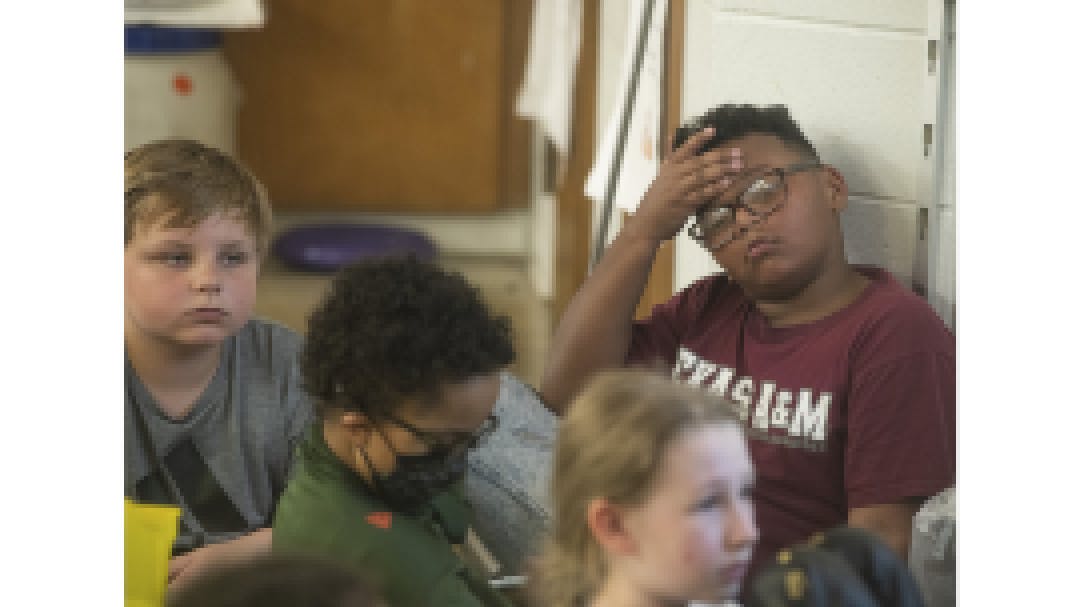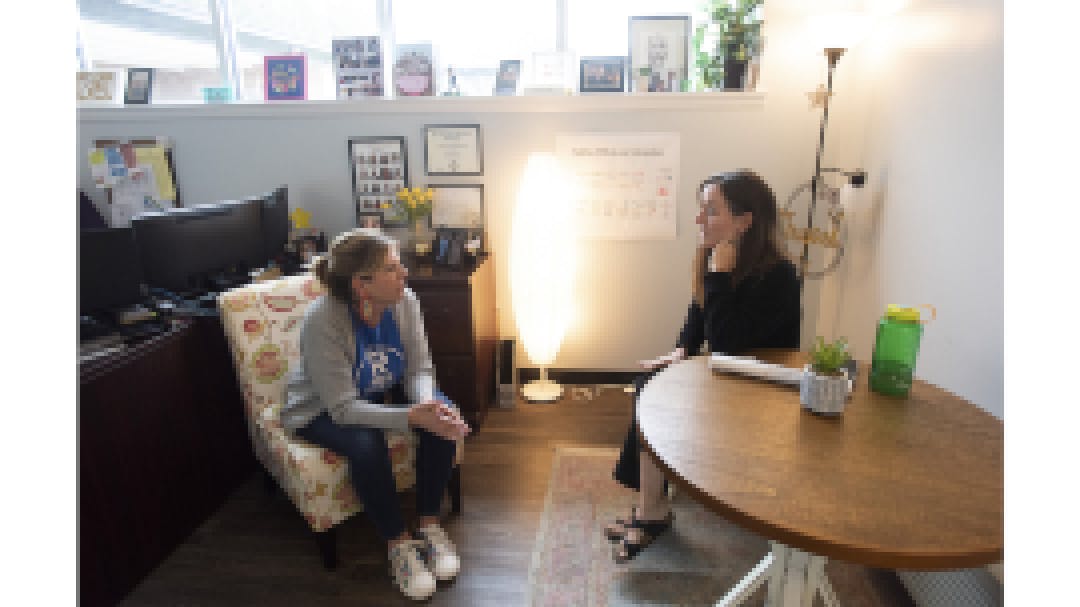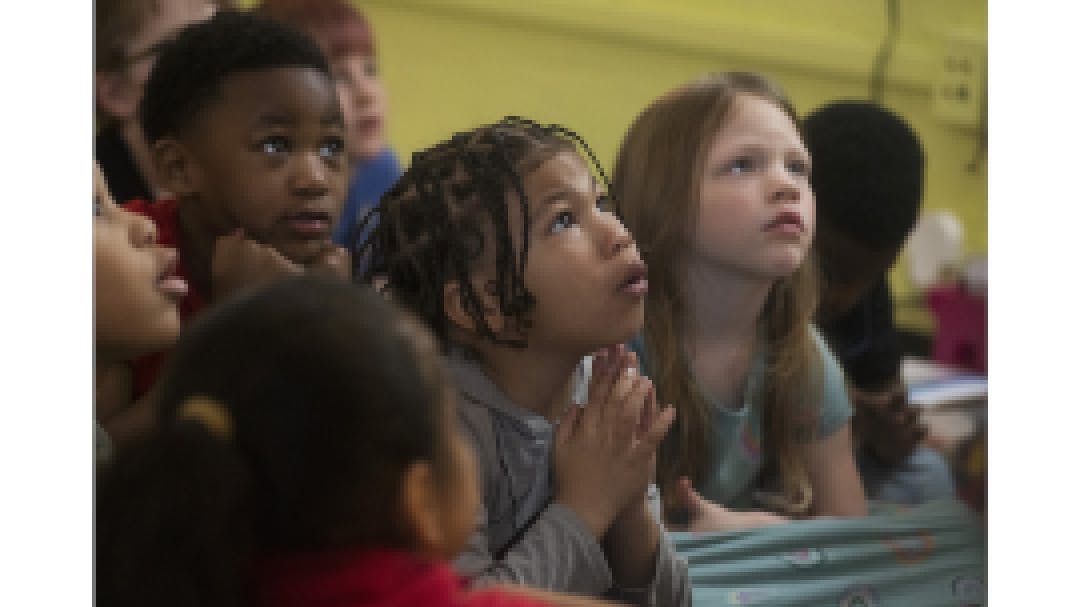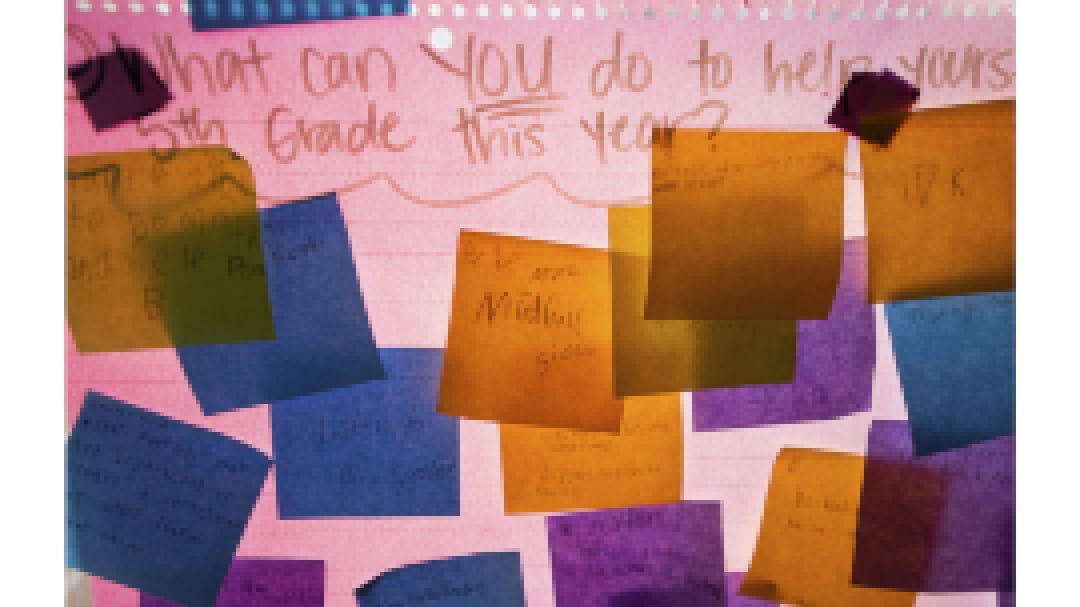Mindfulness changed Mason Rollins’ life.
When he was a first grader at Rivermont Elementary School, Mason was overwhelmed by his emotions. His principal, Jill Evans, often had to take him outside until his meltdowns subsided.

But that was before Mason was introduced to a program at school that focuses on student well-being. Now, as a 10-year-old fourth grader, Mason has developed ways to talk about his emotions, which help him to better cope with anger.
“I really got to know Ms. Evans when I was in first grade and got in a lot of trouble,” Mason says. “But now, she’s my best friend.”
Evans started the mindfulness program in 2019 at the elementary school in Chattanooga, Tennessee. It was inspired by a program for teachers at a nearby elementary school where Evans previously worked as a vice principal.


Right: Evans talks with Mason as they walk down the hall before classes.
“I was there for two years, and when I came here, the culture was a little sharp to me. I feel like people reacted very quickly to everything. If the cars in the car line weren’t moving fast enough, a teacher would yell ‘Come on! Move!’ It was very abrupt, a little rough,” Evans says.
She started thinking about how to change the environment that she would be spending eight to nine hours in every day. She reached out to Jennifer Knowles, an educator who is certified in teaching mindfulness, to help start a program at Rivermont.

In a letter to parents, Knowles describes mindfulness as “a scientifically-based approach to develop awareness, focused attention and emotional regulation. Mindfulness means paying attention in the present moment to our thoughts, feelings, bodily sensations, or surrounding environment. For the sake of simplicity, we can define it as noticing what’s happening right now. It also includes the intentional nurturing of positive states of mind such as empathy and kindness.”
She adds that it is simple, but not always easy.



Left: Jaxton Pickett, a fifth grader, listens to a weekly mindfulness lesson.
Right: From left, kindergarteners Elsie Harding, Teddy Gilreath, Elijah Cummings and Elizabeth Sanchez-Rivera participate in a deep breathing exercise at the beginning of a mindfulness lesson.
Evans says the response to the new mindfulness program was positive, both from inside and outside of the school.
“Teachers were receptive, kids were receptive, and parents were coming in and saying ‘OK, what’s this mindfulness, because they’re trying to tell me how to do it at home, and it’s really helping, and they are teaching us,’” Evans says.
Now, each school day starts with a “mindful moment” and Evans leading a collective breath over the intercom. Each week, Knowles leads a 15-minute mindfulness lesson in every classroom.


Right: Knowles acts out test-taking stress and anxiety during a mindfulness lesson, making different faces and asking students to raise their hands when they see her make a face they can relate to.
The lessons cover a variety of topics including breathing methods, reducing test anxiety, recognizing and naming emotions, empathy, positive self-talk, and many more.
“We are growing vocabulary about emotions and feelings and empathy,” says Evans. “I just don’t think people really understand the emotions kids are dealing with. I think we would be negligent if we didn’t teach self-regulation.”



Left: Fourth grader Zha’Mya Terry listens as Knowles leads a lesson about overwhelm, which she describes as “too much, too soon, too fast.” Knowles teaches the students how to cope with their feelings when they experience overwhelm.
Right: Jace McDermand, a second grader, participates in a mindfulness lesson in his classroom.
Mindfulness has been especially positive for Mason, according to Evans.
“When he was in first grade, he was having horrible temper tantrums. He would be pouring sweat. He would be screaming, I had to get him out in the hallway,” the principal says. “I had to take him outside, and he would scream and throw himself on the ground.”
The new lessons about emotions didn’t take at first.
“We were doing mindfulness and he would scream at me, ‘I don’t want to do mindfulness!’” Evans says.
For the next two years, Mason still had fits, but by the end of third grade, the outbursts became less frequent and less aggressive, and he could talk after them and reflect on them. Mason started using words he learned during mindfulness lessons to describe what he was feeling. Now as his fourth grade year winds down, he has only had two big breakdowns this year.

“He still gets a little worked up, but he doesn’t try to engage, [and] he doesn’t scream as much,” Evans says. “I had him come into my office. He put his head down and said, ‘I’m not ready to talk yet, I need to do some of my mindfulness first.’ He knew that that’s what you do: Get yourself in control, recognize that I’m not well, and instead of me doing something I’m going to regret and get in trouble, he knew he had to stop. That’s what you want.”
Mason also recognizes the role that mindfulness practice has had in his life and his growth at Rivermont.
“I just take deep breaths, and if that doesn’t calm me down, I just try to keep on doing it until it makes me feel better,” Mason says of his newer approach to his emotions. “And then when it makes me feel better, I’m good, and I just put it in the past.”

It’s a big step, but in Evans’ eyes, it’s just the beginning.
“We can’t make kids’ lives perfect — we can’t,” she says. “I can’t control what happens outside in his life — I can barely control what happens inside of these four walls — but we are giving him the tools he needs.”
“Mason would be a student who would have very easily gotten tagged as a ‘problem child,’ and likely would have been suspended perpetually for fighting, because he could not control his anger,” Evans continues. “But he has remorse, and he would say, ‘I don’t like getting in trouble, I don’t need to be a bad kid, I don’t want to do this, I didn’t mean to.’”
“We as a collective, what we did for Mason — I really think we changed the trajectory for him.” ⚡
